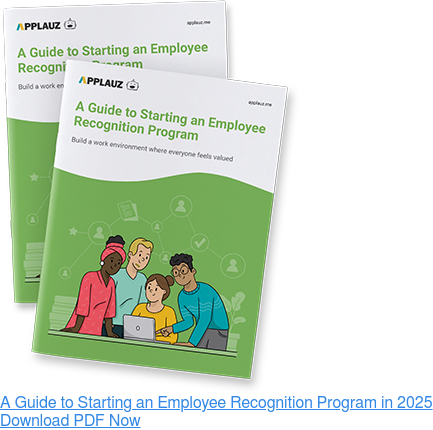It’s not hyperbole to say the majority of people want to work a 4-day week.
In today’s rapidly evolving professional landscape, the traditional 5-day workweek is giving way to innovative approaches that prioritize work-life balance and employee well-being.
Admit it: How much more would you enjoy your job if Thursday were Friday? Or if Monday was a second Sunday?
Embracing this shift, the 4-day workweek is gaining traction in the corporate world, promising not just an extra day off but a transformative way of structuring work. As professionals seek enhanced productivity and companies explore novel strategies to retain talent, the 4-day workweek emerges as a compelling solution, arguably the most popular.
According to a 2023 study by the World Economic Forum (WEF), companies experimenting with this shortened workweek have witnessed remarkable results.
The WEF says giving workers an extra day off a week increases productivity, boosts physical and mental health, and even reduces CO2 emissions.
According to an independent commission of health and science experts tasked with evaluating the program's impact within the WEF study employees with additional downtime benefitted from doing more activities, relaxing, preparing meals, and spending more time with loved ones.
Results showed people in the program had higher self-perceived health statuses, reduced levels of stress, were less tired, and felt happier and more personally satisfied. Employees’ reduced commute times also led to a reduction in nitrogen dioxide emissions and improved air quality.
In this comprehensive guide, we delve into the nuances of the 4-day workweek, exploring its origins, global adoption, and the myriad of benefits it brings to both employees and organizations as we navigate this transformative work model and uncover the keys to a more balanced and fulfilling professional life.
 What Is The 4-Day Workweek?
What Is The 4-Day Workweek?
The 4-day workweek stands as a revolutionary departure from the conventional structure of the current norm, the 5-day workweek. In this approach, full-time employees complete their requisite working hours in four days instead of the standard five, all without facing a reduction in pay.
This reimagining of the workweek aims to enhance employee well-being, boost productivity, and foster a healthier work-life balance. What’s more, the idea of a 4-day workweek isn’t specific to a single industry and has been disrupting a variety of sectors across the working world for several years.
How Many Hours Should be in a 4-Day Workweek?
Understanding the hours invested in a 4-day workweek is crucial for both employers and employees. The two prevalent models, 10-hour shifts and 8-hour shifts offer flexibility and choice.
The implementation of a 4-day workweek can take two primary forms:
10-hour shifts, 4 days/week: This model requires employees to work longer hours during each of the four days, summing up to the standard 40 hours per week. The compressed schedule allows for an additional day off without compromising the total weekly working hours.
8-hour shifts, 4 days/week: In this approach, employees adhere to regular 8-hour shifts but complete the workweek in four days. Despite working 32 hours physically, they receive compensation equivalent to a standard 40-hour workweek.
 The History of The Workweek
The History of The Workweek
Henry Ford, the visionary founder of the Ford Motor Company, played a pivotal role in shaping the workweek as we know it today. In the 1920s, Ford made a groundbreaking decision to reduce the standard 6-day workweek to five days, each consisting of eight hours. This move aimed not only to enhance the well-being of employees but also to stimulate economic growth.
Ford's rationale was clear — by providing workers with an additional day of rest, they would be more rejuvenated and, in turn, more productive when they returned to work. This reduction in working hours became a landmark shift in industrial practices and set the stage for the widespread adoption of the 5-day workweek.
The 4-Day Workweek as We See It Today
Fast-forward to the present and the concept of a 4-day workweek is having a moment. The traditional workweek, once considered untouchable, is being reevaluated in light of contemporary challenges and technological advancements.
Digital Advancements and Remote Work
The advent of digital technology and the widespread adoption of remote work, accelerated by the COVID-19 pandemic, have redefined the possibilities of the modern workplace. Remote work and the hybrid work model have demonstrated that tasks can be accomplished with efficiency and flexibility, challenging the notion that a rigid five-day schedule is indispensable.
Global Experiments and Initiatives
Countries such as Spain have spearheaded initiatives to experiment with the 4-day workweek. In response to economic challenges exacerbated by the pandemic, the Spanish government approved a pilot project subsidizing companies transitioning to the 4-day model. This marked the initiation of a nationwide trial, with positive outcomes reported by companies embracing the change.
A Paradigm Shift with the Fourth Industrial Revolution
Much like when Henry Ford introduced the 5-day workweek, the conversation about the 4-day workweek aligns with the principles of the Industrial Revolution (this one now being the Fourth Industrial Revolution). Characterized by advancements in artificial intelligence, automation, and digital technology, this revolution empowers individuals and organizations to achieve more in less time. The emphasis on efficiency and the integration of technology in the workplace has opened the door to reconsidering established norms.
Benefits of a 4-Day Workweek:
Are there benefits to a 4-day workweek? The resounding answer from various studies and real-world trials is yes. Contrary to the counter-arguments, the 4-day workweek brings forth a spectrum of benefits, including increased productivity, improved work-life balance, and enhanced employee retention.
- Increased Productivity: A shorter workweek often leads to heightened productivity. Freed from burnout and fatigue, employees approach tasks with increased focus, creativity, and innovative thinking, resulting in more efficient outcomes.
- Improved Work-Life Balance: The compressed workweek facilitates a more balanced distribution of time between work and personal life. Employees report reduced stress and better overall well-being, contributing to a healthier lifestyle.
- Enhanced Employee Retention: Companies that have embraced the 4-day workweek observe a decrease in employee turnover. The appeal of a shortened workweek contributes to higher job satisfaction and increased loyalty.
Specifically, independent academic researchers at Boston College, University College Dublin, and Cambridge University found the 4-day week trials won “near-unanimous approval from the workers who took part, with a resounding 97% saying a 4-day week should become “permanent in their organization.”
Employers were also very positive – 92% of those who took part in the UK are retaining the 4-day week after initial trial periods.
Globally, companies who took part in the trial reported their revenues had increased by approximately 8% and were 37.5% higher than the same period in 2021. Hiring increased, absenteeism decreased, and the number of people quitting declined.
Who Should Implement a 4-Day Workweek?
The 4-day workweek is not one-size-fits-all; its applicability depends on the nature of the industry, job roles, and company culture.
It is particularly well-suited for:
- Knowledge-Based Industries: Professions that rely on creativity and problem-solving, such as software development, design, and marketing, can benefit from the increased focus and fresh perspectives offered by a 4-day workweek.
- Results-Oriented Roles: Jobs where output and results matter more than time spent in the office are conducive to this model. As long as goals are met, the flexibility of a shorter workweek can be effectively harnessed.
- Forward-Thinking Companies: Organizations committed to employee well-being and exploring innovative workplace practices are more likely to successfully implement a 4-day workweek. A supportive company culture and open communication are crucial for its success.
As we delve deeper into the facets of the 4-day workweek, it becomes evident that its potential advantages are not confined to a specific sector. Instead, they stem from a thoughtful consideration of the nature of work and a commitment to fostering a healthier, more efficient work environment.
 The 4-Day Workweek: Is It Sustainable Long-Term?
The 4-Day Workweek: Is It Sustainable Long-Term?
The allure of a 4-day workweek raises a crucial question: Is it sustainable in the long term?
Sure, a resounding number of people will almost always choose to work less (especially when getting paid the same) – but is it realistically actionable on a large and permanent scale?
The 4-Day Workweek in Action
Implementing a 4-day workweek has transitioned from theoretical discussions to practical applications in various settings across the corporate world.
Numerous organizations globally have embraced this model, conducting trials to assess its viability and impact.
Examples of 4-Day Workweek Success Stories:
Perpetual Guardian (New Zealand): In 2018, the New Zealand-based company Perpetual Guardian conducted an eight-week trial, allowing employees to work a 30-hour week while being paid for 37.5 hours. The results showcased improvements in employee leadership, commitment, and work-life balance.
Microsoft Japan: In an effort to address the overworking culture, Microsoft Japan experimented with a 4-day workweek during the summer of 2019. The tech giant observed a 40% increase in productivity, accompanied by a 23% decrease in electricity costs and reduced paper usage.
Advantage Consultores (Spain): The Spanish government's initiative to subsidize a 4-day workweek yielded positive results for Advantage Consultores, an international headhunting and consulting firm. Employees experienced increased motivation, self-determination, engagement, autonomy, and productivity.
 What Effect Do 4-Day Workweeks Have on Productivity?
What Effect Do 4-Day Workweeks Have on Productivity?
A key question revolves around productivity—can organizations maintain or even enhance productivity levels with a condensed workweek? Examining more real-world examples provides insights into the productivity dynamics associated with the 4-day workweek.
Productivity Insights from Implementing Companies Around the World:
Buffer (United States): Social media manager Buffer conducted a trial of a 4-day workweek for its 89-person team in April 2020. The results indicated not only sustained productivity but also elevated levels of employee happiness and reduced stress. This encouraged Buffer to continue with the 4-day workweek indefinitely, reporting that 91% of its workforce is “happier and more productive” during 4-day working weeks.
Reykjavík City Council Experiment (Iceland): In one of the largest experiments, involving 1% of Iceland's total workforce, the Reykjavík City Council reported increased morale, a reduction in burnout, and no decrease in productivity. This extensive trial demonstrated that a shorter workweek could be implemented without compromising efficiency.
 Getting Started With a 4-Day Workweek
Getting Started With a 4-Day Workweek
Embarking on the journey toward a 4-day workweek requires thoughtful planning and a clear understanding of its implications. Here are key steps to guide your transition and ensure a smooth implementation.
Ask: Is the 4-Day Workweek Right for Your Team?
Before diving into the transition, it's crucial to assess whether the 4-day workweek aligns with your team's dynamics and goals. Consider the nature of your work, client expectations, and the degree of collaboration required. Engage in open communication with team members to gauge their preferences and concerns. Conduct surveys or meetings to understand how the proposed change resonates with the collective mindset.
Know How It Will Impact Your Goals
Understanding the potential impact of a 4-day workweek on your organizational goals is paramount. Evaluate key performance indicators (KPIs), project timelines, and client deliverables. Will productivity levels be sustained or elevated? What adjustments are needed to maintain efficiency? By comprehending the anticipated effects on your goals, you can tailor the implementation to align with your strategic objectives.
Start Slow
Transitioning to a 4-day workweek is a significant shift that benefits from a phased approach. Consider starting slow to allow both leadership and employees to adapt gradually. Here are actionable steps to initiate the process:
- Implement a Trial Period: Begin with a trial period, perhaps one day per week, to assess the impact on operations and employee well-being.
- Collect Feedback: Actively seek feedback from employees during the trial phase. Understand their experiences, challenges, and suggestions for improvement.
- Evaluate Productivity: Monitor productivity levels during the trial to identify any patterns or trends. This data will be instrumental in making informed decisions.
- Adjust Accordingly: Based on feedback and productivity assessments, make necessary adjustments to the implementation plan. This iterative process ensures a customized approach that resonates with your team's dynamics.
By starting slow and incorporating feedback loops, you not only minimize potential disruptions but also foster a collaborative environment where employees feel valued and heard.
Don't Forget Employee Engagement
No matter the number of days your team works, employee engagement should always be a priority. With fewer working days, it becomes even more important to ensure that teams are aligned with vision and values and feel recognized for their efforts. Leverage employee recognition software like Applauz to increase your team's connection with the people they work with and the values they work for (even if you are diminishing the days they work).
 Is The 4-Day Workweek Worth it?
Is The 4-Day Workweek Worth it?
Embracing flexibility and informed decision-making can pave the way for a harmonious work environment that meets both employer and employee needs.
Implementing the 4-day workweek isn't just about a shift in hours; it's a holistic approach to redefining how we view and engage with work. As we've explored, this alternative schedule has proven benefits, from increased productivity and employee morale to positive environmental impacts. The global trials underscore the viability of this model, with employees reporting better work-life balance and reduced burnout.
By examining real-world examples, we've seen that this shift isn't just about working fewer days; it's about working smarter. From increased collaboration to a reduction in facilities costs, the benefits extend beyond the extra day off.
As industries explore the potential of this model, it's clear that the conversation around work-life balance and employee well-being is evolving. A reduced workweek is more than a schedule change; it's a paradigm shift, signalling a progressive approach to work that prioritizes both individual and collective success.
Who’s down to turn Sundays into Saturdays?
Frequently Asked Questions
What Countries Have a 4-day Workweek?
Several countries have embraced or experimented with the 4-day workweek. Notable examples include Spain, New Zealand, Iceland, and the United Kingdom. Spain, in particular, has championed a national trial to subsidize corporate transitions to the 4-day workweek.
Does a 4-Day Workweek Increase Productivity?
Studies and trials have indicated that a 4-day workweek can lead to increased productivity. Countries like Iceland and New Zealand, along with various companies worldwide, have reported positive outcomes, including enhanced employee well-being, improved work-life balance, and sustained or heightened productivity levels.
Are 4-Day Workweeks Better?
The effectiveness of a 4-day workweek depends on various factors, including the nature of the work, industry, and organizational goals. For many, the benefits include reduced stress, improved morale, and potential cost savings for employers. However, its suitability varies, and a thorough assessment of the specific context is essential before deciding if a 4-day workweek is the right fit.
About the author
Tyler Jadah
Tyler is a freelance writer focused on subjects like talent management, employee retention, and leadership development. Tyler delivers practical advice to help businesses cultivate motivated and high-performing teams.



